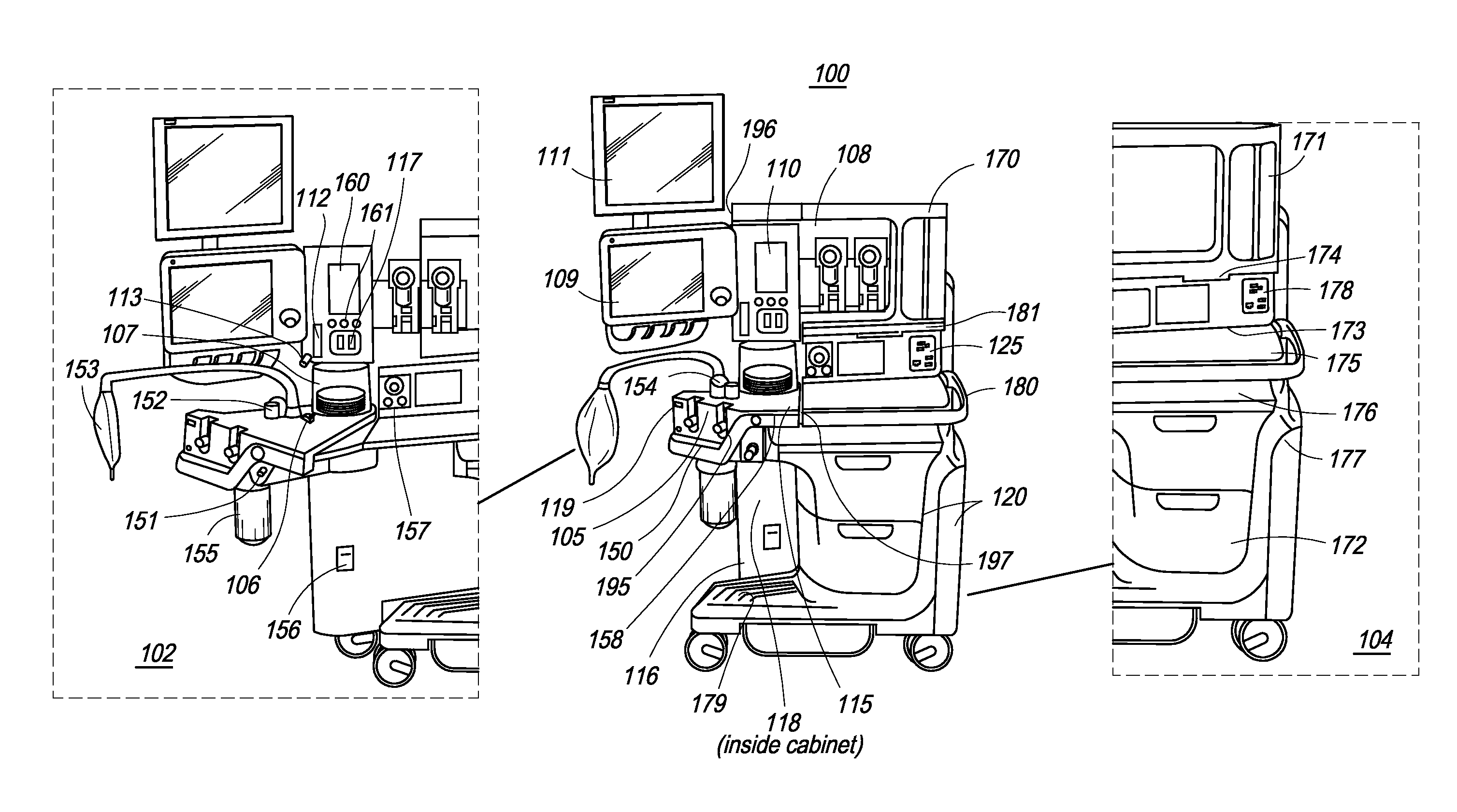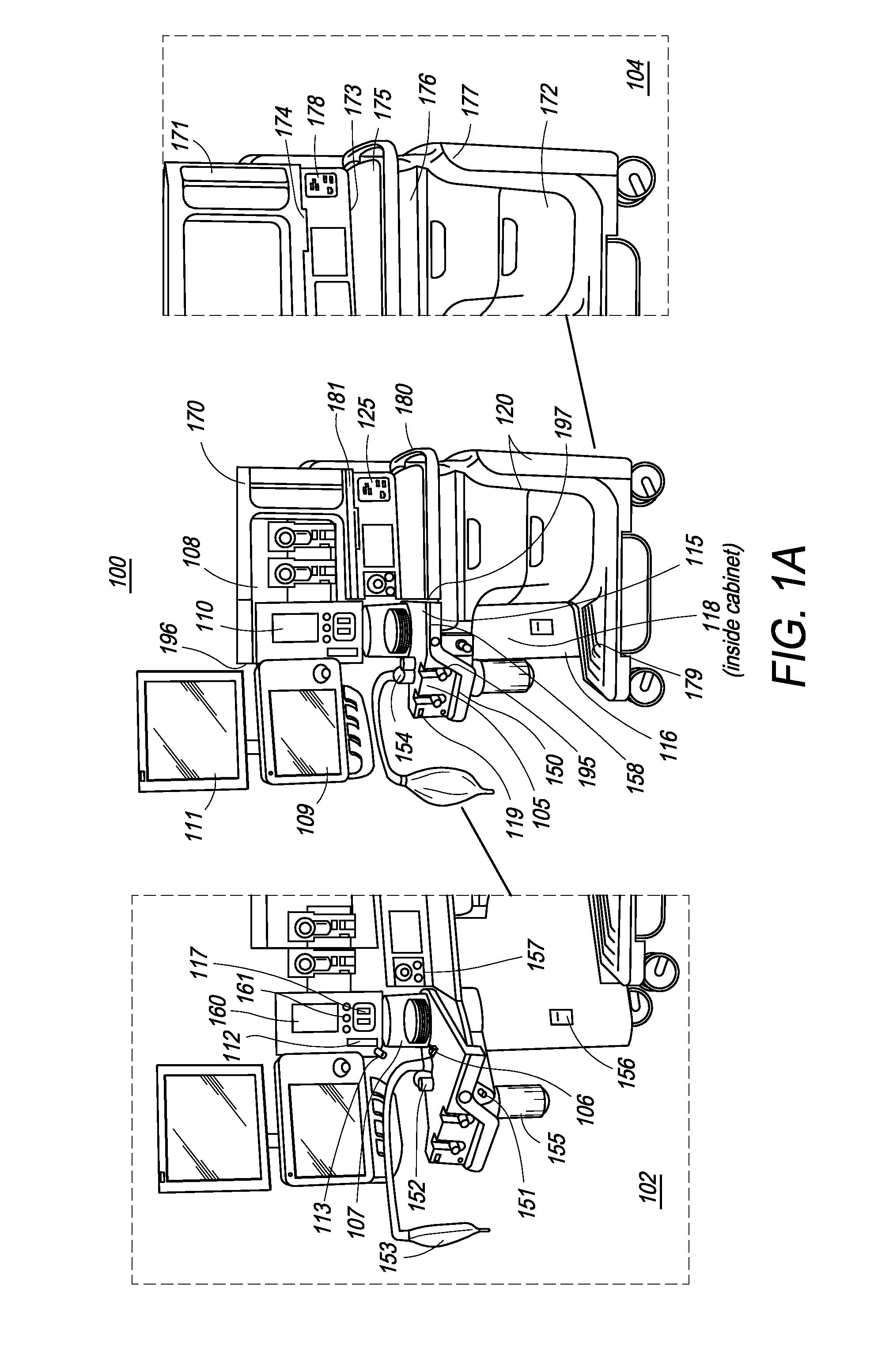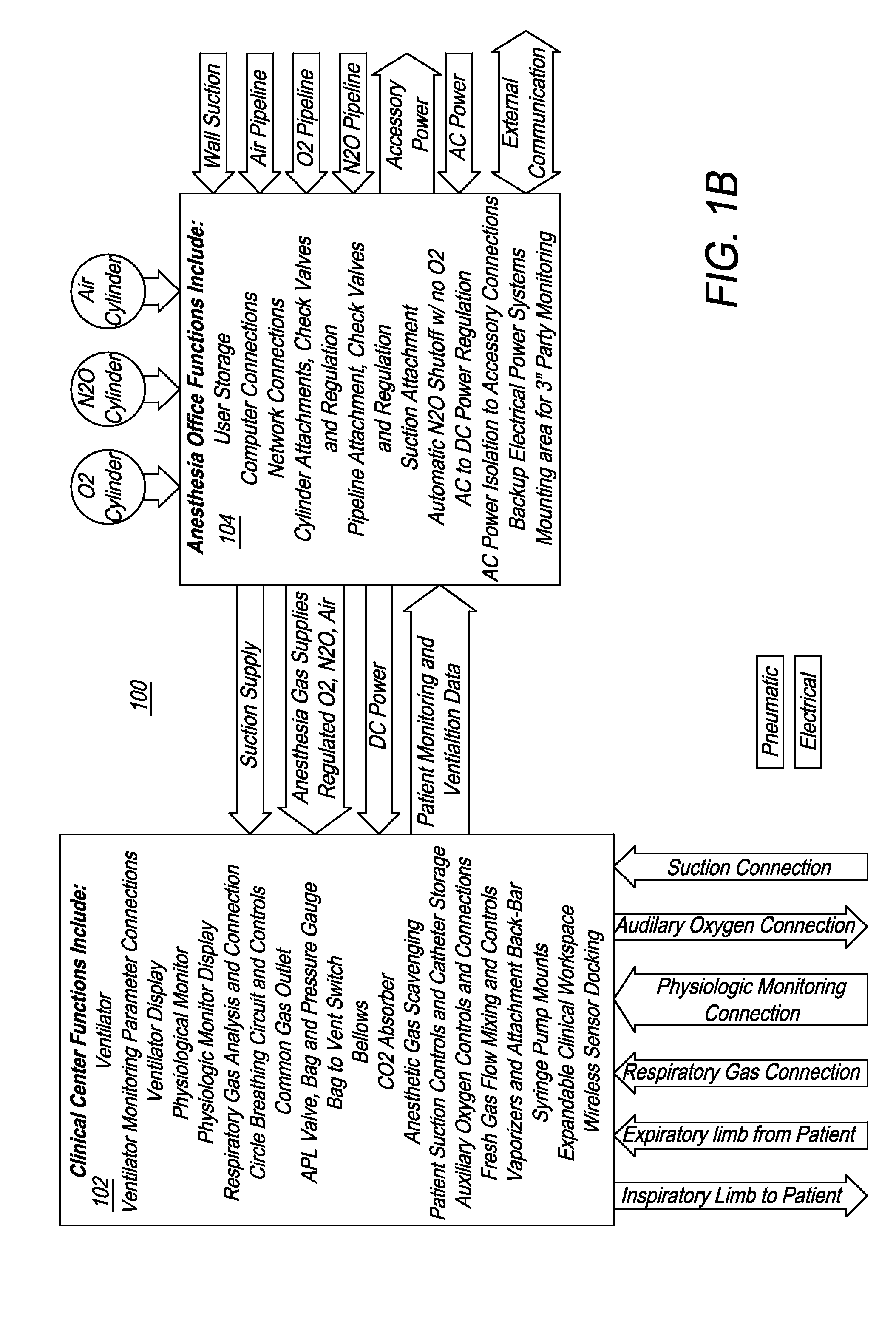Integrated, Extendable Anesthesia System
an anesthesia system, integrated technology, applied in the field of medical systems, can solve the problems of no convenient location for syringes, laryngoscopes and other clinical equipment, and no direct clinical action for patients,
- Summary
- Abstract
- Description
- Claims
- Application Information
AI Technical Summary
Benefits of technology
Problems solved by technology
Method used
Image
Examples
Embodiment Construction
[0080]The present invention is directed towards an anesthesia system, having an integrated, extendable clinical center and clinician / anesthesia office. The present invention is directed towards an anesthesia system which accommodates for physical separation of clinical and clerical functions. The present invention is also directed towards an anesthesia system that allows for a portion of the system to be brought closer to the patient such that clinical controls can be accessed while tending to the patient airway, without compromising office space available to the clinician or crowding the patient area.
[0081]The present invention is directed towards multiple embodiments. The following disclosure is provided in order to enable a person having ordinary skill in the art to practice the invention. Language used in this specification should not be interpreted as a general disavowal of any one specific embodiment or used to limit the claims beyond the meaning of the terms used therein. The...
PUM
 Login to View More
Login to View More Abstract
Description
Claims
Application Information
 Login to View More
Login to View More - R&D
- Intellectual Property
- Life Sciences
- Materials
- Tech Scout
- Unparalleled Data Quality
- Higher Quality Content
- 60% Fewer Hallucinations
Browse by: Latest US Patents, China's latest patents, Technical Efficacy Thesaurus, Application Domain, Technology Topic, Popular Technical Reports.
© 2025 PatSnap. All rights reserved.Legal|Privacy policy|Modern Slavery Act Transparency Statement|Sitemap|About US| Contact US: help@patsnap.com



